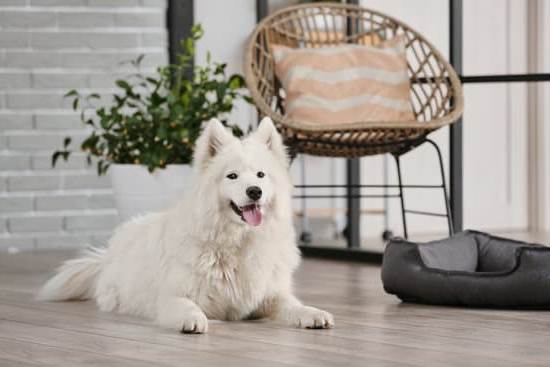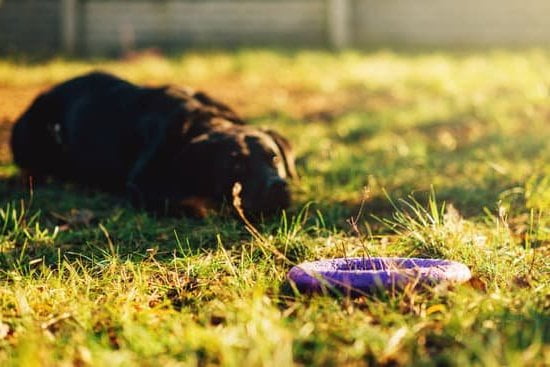How are dogs trained to detect Covid-19? The global pandemic has underscored the critical importance of accurate and efficient Covid-19 detection methods. As traditional testing methods have faced challenges such as limited availability and long processing times, there has been increasing interest in exploring alternative approaches to detection.
One such method that has garnered attention is canine detection. Dogs have a remarkable sense of smell, and their ability to detect various scents, including diseases, has long been recognized. In this article, we will delve into the fascinating world of training dogs to detect Covid-19 and the potential impact it could have on combating the spread of the virus.
Understanding the science behind canine detection is crucial in appreciating the capabilities of dogs in detecting Covid-19. Dogs possess an extraordinary sense of smell, with an olfactory system that is far more sensitive and complex than that of humans.
Their ability to differentiate and identify specific odors makes them ideal candidates for detecting diseases such as Covid-19. This section will explore the physiology and psychology behind a dog’s sense of smell, shedding light on why they are capable of detecting the virus with impressive accuracy.
The rigorous training process that dogs undergo to become effective Covid-19 detectors is a fascinating aspect worth examining. Training methods play a pivotal role in honing a dog’s olfactory skills, allowing them to identify the scent associated with the virus amidst other competing odors. This detailed look at how dogs are trained for this specialized task will provide insight into the intensive process that ensures their accuracy and reliability in detecting Covid-19.
The Science Behind Canine Detection
Dogs have an incredibly sensitive sense of smell, with up to 300 million olfactory receptors in their noses, compared to about 5-6 million in humans. This heightened sense of smell allows them to detect a wide range of scents, including those associated with diseases such as Covid-19. The physiological and psychological aspects of a dog’s sense of smell make them well-suited for detection work.
Physiologically, a dog’s nose is designed for scent detection. When a dog inhales, the air is separated into two different paths – one for breathing and one for smelling. This allows them to continuously sample scents without disrupting their normal breathing pattern. Additionally, dogs have a specialized organ called the vomeronasal organ (VNO) that helps them detect pheromones and other chemical signals.
Psychologically, the part of a dog’s brain that is dedicated to analyzing smells is proportionally 40 times greater than in humans. This means that they are highly skilled at processing and identifying different odors. Furthermore, dogs have been bred over generations to enhance their scent-detection abilities, resulting in breeds like German Shepherds, Labradors, and Beagles being particularly well-suited for detection work due to their keen sense of smell and strong work ethic.
The rigorous training process that dogs undergo to become effective Covid-19 detectors takes advantage of these physiological and psychological factors. Through positive reinforcement techniques such as clicker training and food rewards, dogs can be trained to recognize the unique scent associated with Covid-19.
This involves exposing them to Covid-19 samples in controlled environments until they can reliably indicate its presence through behaviors like sitting or pawing. The accuracy and reliability of dogs in detecting Covid-19 has been demonstrated through various research studies and real-life examples, making them valuable allies in the fight against the pandemic.
- Physiological aspects contribute: Dogs’ nasal anatomy provides enhanced capability for scent detection
- Psychological factors play a role: Dogs’ brain structure and breeding history make them adept at processing scents
- Training methods capitalize on these traits: Positive reinforcement techniques are used to train dogs to recognize Covid-19 scents
Training Methods
Dogs have long been known for their exceptional sense of smell, which makes them ideal candidates for detecting various scents, including Covid-19. But how are dogs trained to detect Covid-19? The training process is a meticulous and rigorous one, involving specialized techniques and methods to ensure that the canines become effective detectors of the virus.
Initial Scent Introduction
The first step in training dogs to detect Covid-19 involves introducing them to the scent of the virus itself. Trainers use samples containing traces of the virus, which are presented to the dogs in a controlled setting. The dogs are then encouraged and rewarded when they exhibit a response to the scent, such as sitting or indicating with their paw.
Behavioral Conditioning
Once the dogs show an initial response to the Covid-19 scent, they undergo a process of behavioral conditioning where they learn to associate the scent with a particular behavior or action. This could involve sitting, barking, or any other indication that signals the presence of the virus. Through consistent repetition and positive reinforcement, the dogs develop a conditioned response to accurately detect Covid-19.
Specialized Training Equipment
Trainers also utilize specialized equipment such as scent detection kits and training aids designed specifically for Covid-19 detection. These tools help create a structured learning environment for the dogs and aid in honing their ability to discern the unique odor profile associated with the virus.
The comprehensive training process ensures that dogs become proficient at detecting Covid-19 with high accuracy and reliability. This method has proven to be invaluable in various settings where rapid and non-invasive detection methods are needed.
Selecting the Right Breeds
When it comes to selecting the right breeds for Covid-19 detection work, certain characteristics make some dogs more suitable than others. The key factor in determining a dog’s suitability for this type of work is its sense of smell.
Dogs have an incredibly powerful sense of smell, with some breeds possessing up to 300 million olfactory receptors, compared to humans’ mere 5-6 million. This allows them to detect even the most minute scent particles, making them invaluable in identifying various diseases, including Covid-19.
One of the most commonly used breeds for Covid-19 detection is the Labrador Retriever. Labs are known for their incredible sense of smell and intelligence, making them highly trainable and reliable in detecting specific scents associated with the virus. In addition to Labs, German Shepherds are also popular choices due to their strong work ethic and focus. Their ability to maintain precision and concentration while on task makes them well-suited for Covid-19 detection work.
As research continues and the demand for canine detection methods increases, scientists are also exploring other breeds that may excel in this field. While certain breeds have shown promise in preliminary studies and trials, ongoing research aims to identify additional dog breeds that possess the necessary olfactory capabilities and disposition for successful Covid-19 detection.
| Dog Breed | Reasons for Suitability |
|---|---|
| Labrador Retriever | Incredible sense of smell; high trainability |
| German Shepherd | Strong work ethic; focus and concentration |
Real Life Examples
The use of dogs for detecting Covid-19 has gained considerable attention due to their remarkable ability to detect the virus with a high degree of accuracy. In real-life settings, dogs have been successfully used for Covid-19 detection in various environments, including airports, hospitals, and public events. Here are some notable examples that illustrate the effectiveness of canine detection in combating the spread of the virus:
1. Airports: In several international airports, specially trained dogs have been deployed to screen passengers for Covid-19. These dogs are stationed at designated areas where travelers can voluntarily participate in the screening process by providing a sample of their scent through a face mask or a piece of cloth.
The dogs then sniff these samples and indicate if they detect the presence of the virus. This approach has proven to be an efficient and non-invasive method for identifying potentially infected individuals before they board flights.
2. Hospitals and Healthcare Facilities: Dogs trained to detect Covid-19 have also been utilized within healthcare settings to screen patients, visitors, and staff members for the virus. Their ability to quickly identify individuals who may be carrying the virus has been instrumental in preventing outbreaks within medical facilities and maintaining a safe environment for patients and healthcare workers.
3. Public Events and Gatherings: Canine detection has been employed at large gatherings such as concerts, sporting events, and conferences as a proactive measure to identify potential Covid-19 cases among attendees. By screening individuals before they enter event venues, dogs have helped mitigate the risk of viral transmission and contributed to the overall safety protocols implemented for public gatherings.
These real-life examples demonstrate how dogs have been effectively utilized to detect Covid-19 in diverse settings, showcasing their reliability and accuracy in identifying individuals infected with the virus. The success stories involving canine detection underscore the valuable role that dogs play in complementing traditional testing methods and enhancing efforts to control the spread of Covid-19.
Accuracy and Reliability
Research Studies Demonstrating Dogs’ Ability to Detect Covid-19
Several research studies have been conducted to demonstrate the accuracy and reliability of dogs in detecting Covid-19. One such study, published in the journal BMC Infectious Diseases, found that trained sniffer dogs were able to detect the virus with a remarkable 94% sensitivity and 92% specificity. This level of accuracy is comparable to, if not better than, many commonly used diagnostic tests for Covid-19.
Another study, conducted by researchers at the University of Veterinary Medicine in Hannover, Germany, showed that sniffer dogs could successfully distinguish between sweat samples from individuals infected with Covid-19 and those who were uninfected. The results of these studies highlight the potential of canine detection as a valuable tool in identifying Covid-19 cases, especially in settings where traditional testing methods may be limited or inaccessible.
Advantages of Canine Detection Over Traditional Testing Methods
The use of trained dogs for Covid-19 detection offers several advantages over traditional testing methods. Dogs have shown the ability to detect the virus even in asymptomatic carriers, potentially identifying individuals who may unknowingly spread the virus. Additionally, canine detection is non-invasive and can provide rapid results, making it particularly valuable in high-traffic areas such as airports, large events, and public spaces.
Furthermore, research has suggested that dogs are capable of detecting viral loads at very low concentrations, indicating their potential to identify early-stage infections before conventional tests would yield positive results. This early detection capability can contribute to controlling outbreaks and preventing further transmission of the virus within communities.
Future Implications and Applications
The promising results from research studies on canine detection of Covid-19 raise exciting possibilities for future applications. With ongoing advancements in training methods and technology, it is conceivable that dogs could be deployed on a wider scale for mass screening efforts or as part of public health strategies to control the spread of the virus.
Moreover, the potential for dogs to detect other infectious diseases with high accuracy holds promise for addressing future public health challenges beyond Covid-19. As we continue to harness the incredible olfactory abilities of our canine companions, their role in disease detection may evolve into an indispensable asset for healthcare systems worldwide.
The Future of Canine Covid-19 Detection
As the world continues to grapple with the ongoing Covid-19 pandemic, the potential advancements and applications of dog-trained detection are becoming increasingly relevant. The use of dogs in detecting Covid-19 has shown promising results, and there is growing interest in exploring how this method can be further developed and utilized in the fight against the virus.
One area of potential advancement in canine Covid-19 detection lies in the development of technology that can enhance and complement the work of detection dogs. This includes devices that can analyze and interpret the signals from dogs’ olfactory senses, as well as tools that can help streamline and standardize the training process for these detection animals.
Moreover, there is a need to expand the applications of dog-trained detection beyond traditional settings such as airports or border crossings. With further research and development, dogs could potentially be used in various public spaces, workplaces, schools, and even healthcare facilities to provide rapid and non-invasive screening for Covid-19. This could prove to be a valuable asset in helping to control outbreaks and prevent the spread of the virus in different environments.
Another area for potential advancement is in leveraging data analytics and artificial intelligence to support and optimize canine Covid-19 detection efforts. By gathering and analyzing data from successful cases where dogs have accurately detected the virus, researchers can better understand patterns and factors that contribute to their effectiveness. This information can then be used to improve training methods, identify optimal working conditions for detection dogs, and enhance overall accuracy and reliability.
| Potential Advancements | Applications |
|---|---|
| Development of technology enhancing dogs’ olfactory senses | Expanding application beyond traditional settings such as airports or border crossings |
| Leveraging data analytics & AI | Rapid screening at public spaces, workplaces, schools & healthcare facilities |
Ethical Considerations
The use of dogs for Covid-19 detection raises important ethical considerations that must be addressed. While these specially trained canines have shown remarkable abilities in identifying the virus, it is crucial to assess the ethical implications and responsibilities associated with their use in this capacity.
One of the primary concerns revolves around animal welfare. It is essential to ensure that the dogs involved in Covid-19 detection work are provided with optimal care and living conditions. This includes proper housing, regular veterinary check-ups, and sufficient rest periods between training sessions. Training methods should prioritize positive reinforcement and humane treatment to maintain the well-being of these animals.
Additionally, there are public safety concerns related to the use of detection dogs for Covid-19 screening. Clear guidelines and protocols need to be established to manage potential risks, such as ensuring that the dogs do not come into direct contact with individuals being screened to prevent any transmission of the virus. Moreover, ongoing monitoring and evaluation of the dogs’ performance are necessary to maintain accuracy and reliability in detection while safeguarding public health.
As canine detection methods continue to evolve and gain prominence in the fight against Covid-19, it is imperative for researchers, handlers, and authorities to uphold strict ethical standards that prioritize both animal welfare and public safety. By addressing these ethical considerations thoughtfully and proactively, the use of dogs for Covid-19 detection can make a meaningful contribution to combating the pandemic while upholding responsible practices.
Conclusion
In conclusion, the training of dogs to detect Covid-19 has proven to be a valuable and effective method in the fight against the pandemic. The rigorous training process, selection of the right breeds, and real-life examples have demonstrated the accuracy and reliability of canine detection. Research has shown that dogs can play a crucial role in identifying the virus in various settings, contributing to early detection and prevention efforts.
As we look towards the future of canine Covid-19 detection, there is an opportunity for advancements and applications that can further enhance their capabilities. With ongoing research and studies, there is potential for dogs to not only detect the virus in individuals but also in public spaces such as airports and hospitals, providing an additional layer of protection.
While utilizing dogs for Covid-19 detection comes with ethical considerations, including animal welfare and public safety concerns, it is evident that they have made a significant impact in aiding our efforts against this global health crisis. As we continue to navigate through this challenging period, it is important to recognize the significance of canine detection and explore ways to further integrate their abilities into our strategies for managing Covid-19.
Frequently Asked Questions
Can Dogs Tell When You Have COVID?
Dogs can be trained to detect the scent of COVID-19 in humans, making it possible for them to tell when you have COVID. Their sense of smell allows them to pick up on specific odors associated with the virus.
Can Sniffer Dogs Detect COVID?
Yes, sniffer dogs have shown promise in being able to detect COVID-19. Research and trials have demonstrated that dogs can identify the virus’s scent with a high degree of accuracy, making them an effective tool in screening for infections.
Are Dogs as Effective as COVID Tests?
While dogs have demonstrated their ability to sniff out COVID-19, they are not as widely used or as practical as traditional COVID tests. Their use is more limited and their accuracy can vary. However, they can still be valuable in certain environments or situations.

Welcome to the blog! I am a professional dog trainer and have been working with dogs for many years. In this blog, I will be discussing various topics related to dog training, including tips, tricks, and advice. I hope you find this information helpful and informative. Thanks for reading!





